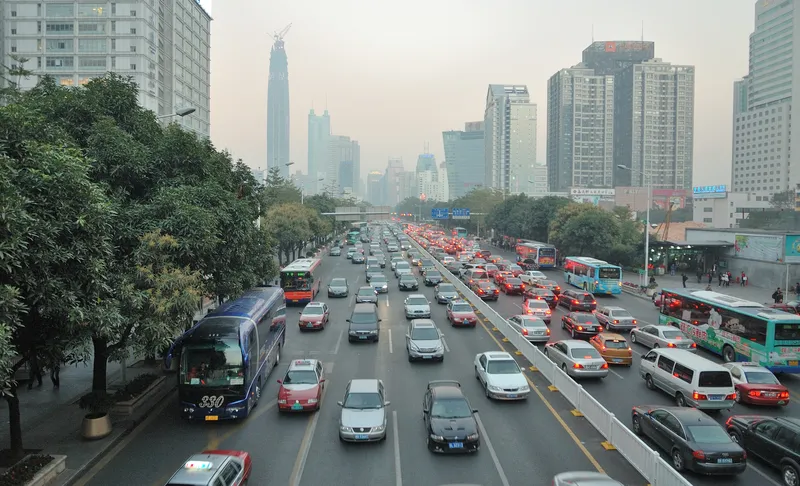
Vehicle to Everything (V2X) technology was once described as ‘zombie tech’ – not quite dead but not quite alive either. Devised more than 20 years ago to allow vehicles to communicate with other vehicles and the highway infrastructure, the US Federal Communications Commission (FCC) set aside the 5.9 GHz band for it back in 1999. But in the two decades that followed, progress has been slow.
It’s not that V2X is a bad idea, far from it. Perhaps the strongest argument for V2X is its ability to prevent accidents by warning drivers of approaching dangers that the vehicle itself cannot see.
This capability is so significant that the US National Highway Traffic Safety Administration (NHTSA) estimates that it has the potential to either eliminate - or at least mitigate the severity of - 80% of crashes. Given that the current annual average road deaths in the US is close to 43,000, this could have a life-changing impact for tens of thousands of families across America every year.
There’s a problem, however. For V2X to work it requires a critical mass of users. Think about Google Maps for a second. If it didn’t have a billion active users submitting their own position data to the Cloud, it wouldn’t be anywhere near as powerful as a navigation tool. To be useful, we would need to see the almost universal deployment of V2X technology – and, to date, that has not happened.
So, with little uptake, the FFC took the decision in 2020 to reallocate part of the spectrum reserved for automotive safety and give it to WiFi users instead. However, like any good zombie, V2X has refused to die - and there are at least five good reasons for its resurrection.
Societal trends
One of the main reasons V2X is back on the agenda is its potential to solve significant global challenges. This includes achieving Net Zero. Aside from preventing accidents, it can also enable transformative transportation solutions, such as vehicle platooning. By keeping vehicles on the road longer, it will also help to reduce the carbon emissions attributed to the production of new vehicles. The need to create more efficient traffic systems is also seen as crucial to tackling congestion in areas of the world which are facing rapid urbanisation, such as Asia and Africa.

Affordable technology
Another big reason why V2X is closer to becoming a reality is that the supporting technology has become considerably cheaper and more accessible. Initially, the V2X systems required dedicated technology which included a separate discrete modem, a host device and an application system within the car. More modern designs are able to bundle and squeeze the modem and host processor into a single silicon die, however, reducing the complexity and overall cost of the device.
It is now also possible for the V2X capability to be effortlessly embedded into 5G connectivity platforms using the cellular V2X (C-V2X) protocol standard. My team has recently been working with one of the world’s biggest silicon vendors to optimise 5G infrastructure. And, as part of that project, we have been developing a mobile edge compute (MEC) solution that can support V2X functionality. What’s clear is that due to its growing prevalence – along with the promise of lower operating costs, ultra-low latency and high bandwidth – 5G will become the backbone of V2X applications.
Standard conformity
A third reason why we are seeing interest in V2X intensify is that there now seems to be a growing consensus around the standard that will enable it. Since 1999, the standards have been based on dedicated short-range communication (DSRC). But increasingly we’re seeing a move to the C-V2X standard.
Last year also saw the FCC grant a waiver that allowed a consortium of V2X providers and automakers, which included Audi, Ford and Jaguar Land Rover, to use the 5.9 GHz band and deploy C-V2X onboard and in roadside units. Gaining consensus over the standards will be crucial as it will enable the whole industry to plan future investments with confidence – and speed up deployment.
Growing adoption
A fourth major reason is that we’re seeing greater support for this technology around the world. In Europe, we’re seeing a growing number of projects that are now paving the way for V2X adoption in urban environments. While in China, it’s estimated that 50% of all new cars sold will feature C-V2X as standard in 2025.
We are starting to see more use cases. For example, Ford has been trialling connected traffic lights that could help clear a path for ambulances, fire engines and police vehicles – helping emergency services reach incidents faster and preventing accidents on the way.
Potential mandates
Perhaps the biggest step towards greater adoption, however, may be yet to come. V2X has been described as a “digital seatbelt”, but unlike actual seatbelts, V2X is not compulsory technology. This is despite the NHTSA stating that the implementation of just two V2X safety features – intersection movement assist (IMA) and left turn assist (LTA) – could prevent up to 615,000 crashes – and save up to 1,366 lives per year.
If V2X was mandated, however, it would alter the landscape significantly. And this is not a far-fetched idea. The US Department of Transport (USDoT) is looking at this and it convened a V2X Summit in 2022 with the intention of working with the industry to build a roadmap to V2X.
Universal deployment
However, even with USDoT backing, the universal deployment of V2X will not happen overnight. When ITS America published its National V2X Deployment Plan earlier this year, it estimated that, even if mandated, it would still be eight to 13 years before all vehicles were equipped with C-V2X.
The reality is a lot of work still needs to be done to breathe life into V2X. But with 43,000 road deaths happening each year in the US, the incentive to do so is strong.

ABOUT THE AUTHOR
Przemysław Krokosz, edge and embedded technology expert at Mobica










